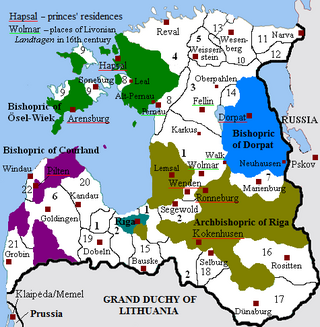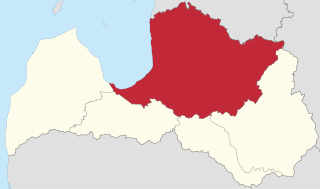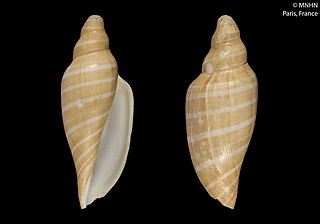
Livonia or in earlier records Livland, is a historical region on the eastern shores of the Baltic Sea. It is named after the Livonians, who lived on the shores of present-day Latvia.

Livonia is a city in Wayne County in the U.S. state of Michigan. The population was 95,535 at the 2020 census, which ranked it as Michigan's ninth most-populated municipality.

Swedish Livonia was a dominion of the Swedish Empire from 1629 until 1721. The territory, which constituted the southern part of modern Estonia and the northern part of modern Latvia, represented the conquest of the major part of the Polish-Lithuanian Duchy of Livonia during the 1600–1629 Polish-Swedish War. Parts of Livonia and the city of Riga were under Swedish control as early as 1621 and the situation was formalized in the Truce of Altmark 1629, but the whole territory was not ceded formally until the Treaty of Oliva in 1660. The minority part of the Wenden Voivodeship retained by the Polish–Lithuanian Commonwealth was renamed the Inflanty Voivodeship, which today corresponds to the Latgale region of Latvia.
Livonia is a historical region now divided between Estonia and Latvia.

The Duchy of Livonia, also referred to as Polish Livonia or Livonia, was a territory of the Grand Duchy of Lithuania and later the Polish–Lithuanian Commonwealth that existed from 1561 to 1621. It corresponds to the present-day areas of northern Latvia and southern Estonia.

The Livonian War (1558–1583) was fought for control of Old Livonia. The Tsardom of Russia faced a varying coalition of the Dano-Norwegian Realm, the Kingdom of Sweden, and the Union of the Grand Duchy of Lithuania and the Kingdom of Poland.

The Coat of arms of the Republic of Latvia was officially adopted by the Constitutional Assembly of Latvia on 15 June 1921, and entered official use starting on 19 August 1921. It was created using new national symbols, as well as elements of the coats of arms of Polish and Swedish Livonia and of the Duchy of Courland and Semigallia. Thus, the coat of arms combines symbols of Latvian national statehood, as well as symbols of its historical regions. The Latvian national coat of arms was designed by Latvian artists Vilhelms Krūmiņš and Rihards Zariņš.

The Governorate of Livonia, also known as the Livonia Governorate, was a province (guberniya) of the Russian Empire and the Baltic Governorate-General until 1876. The Governorate of Livonia bordered the Governorate of Estonia to the north, the Saint Petersburg and Pskov Governorates to the east, the Courland Governorate to the south, and the Gulf of Riga to the west. In 1897, the population of the governorate was 1,299,365, and it had an area of 47,030.87 square kilometres (18,158.72 sq mi). The administrative centre of the governorate was the Baltic Sea port of Riga. It roughly corresponded to most of the modern Vidzeme Region of Latvia and southern Estonia.

Nigula Nature Reserve is a nature reserve situated in South-West of Estonia, in Häädemeeste and Saarde parishes of Pärnu County. It has an area of 63.98 km². Nigula nature reserve is one of the oldest bog reserves in Estonia. It is established to protect the Nigula Bog and its surrounding forests in their natural state.

Vidzeme is one of the Historical Latvian Lands. The capital of Latvia, Riga, is situated in the southwestern part of the region. Literally meaning "the Middle Land", it is situated in north-central Latvia north of the Daugava River. Sometimes in German, it was also known as Livland, the German form from Latin Livonia, though it comprises only a small part of Medieval Livonia and about half of Swedish Livonia. Most of the region's inhabitants are Latvians (85%), thus Vidzeme is the most ethnically Latvian region in the country.

Volutidae, common name volutes, are a taxonomic family of predatory sea snails that range in size from 9 mm to over 500 mm. They are marine gastropod mollusks. Most of the species have no operculum.

The Polish–Swedish War of 1621 to 1625 was a war in a long-running series of conflicts between the Polish–Lithuanian Commonwealth and the Swedish Empire. It began with a Swedish invasion of the Polish–Lithuanian fiefdom Livonia. Swedish forces succeeded in taking the city of Riga after a siege. The Commonwealth, focussed on war with the Ottoman Empire, was unable to send significant forces to stop Gustav Adolf, and signed a truce favorable to Sweden. The Commonwealth ceded Livonia north of the Dvina (Düna) river, and retained only nominal control over Riga. The new truce in Mitau was signed and lasted from November 1622 to March 1625.

Livonia is a genus of medium-sized Indo-Pacific predatory sea snails, marine gastropod mollusks in the family Volutidae, the volutes.

Scaphella is a genus of large sea snails, marine gastropod mollusks in the family Volutidae, the volutes.

Greenmead Historical Park, also known as Greenmead Farms, is a 3.2-acre (1.3 ha) historic park located at 38125 Base Line Rd., Livonia, Michigan. It includes the 1841 Greek Revival Simmons House, six other structures contributing to the historic nature of the property, and additional buildings moved from other locations. Greenmead Farms was designated a Michigan State Historic Site in 1971 and listed on the National Register of Historic Places in 1972.

Livonia joerinkensi is a species of sea snail, a marine gastropod mollusk in the family Volutidae, the volutes.
Livonia limpusi is a species of sea snail, a marine gastropod mollusk in the family Volutidae, the volutes.

Livonia mammilla, common name false melon or false baler, is a species of sea snail, a marine gastropod mollusk of the genus Livonia in the family Volutidae, the volutes.

Livonia nodiplicata is a species of sea snail, a marine gastropod mollusk in the family Volutidae, the volutes.

Terra Mariana was the official name for Medieval Livonia or Old Livonia. It was formed in the aftermath of the Livonian Crusade, and its territories were composed of present-day Estonia and Latvia. It was established on 2 February 1207, as a principality of the Holy Roman Empire, but lost this status in 1215 when Pope Innocent III proclaimed it as directly subject to the Holy See.
















